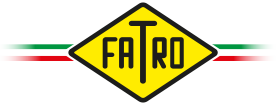What is Crigler-Najjar Syndrome?
Crigler-Najjar Syndrome is a rare hereditary disease with recessive autosomal transmission, characterised exteriorly by the fact that people affected have a yellow skin (jaundice). The jaundice is due to an accumulation of bilirubin, a pigment produced only by the healthy organism. This accumulation of bilirubin derives from the partial or total lack of a liver protein, an enzyme called Uridine Diphosphate-glucuronyltransferase (abbreviation UDPGT), which normally metabolizes bilirubin so it can be eliminated with the bile through the intestine. If there is a total lack of the enzyme (Type I C-NS) the quantity of bilirubin is very high; however, if the deficit is partial (type II C-NS), bilirubin is less than 20 mg/dl (the normal value is below 1 mg/dl). Therefore, people affected by this deficit (1 person per million) must coexist with this excess of bilirubin. They do not have other physical problems. It is not contagious.
The disease, which is present all around the world and is a problem only for those affected by it. High bilirubin levels, in addition to causing minor disorders, can be toxic to the central nervous system: at high bilirubin concentrations, the neurons, that is to say the brain cells, undergo severe damage. No drugs are helping to reduce excess bilirubin. To avoid (or reduce to a minimum) the risk of brain damage, patients must undergo daily phototherapy, which exploits the effect of light of a particular wavelength, produced by special lamps; the patients spend 8-10 hours per day under these lamps. A radical alternative consists of a liver transplant, a solution which is not free from risk; the transplant permits "cure" of the disease, because the transplanted liver has normal production of the enzyme, the one the patient lacks. As for many other hereditary diseases arising from a genetic defect concerning just one protein in the human organism, research programs have been underway for years throughout the world, to find different, definitive therapies based on the replacement of the missing or defective gene, without having to turn to the transplant of an entire organ, which is actually healthy. This research is obviously expensive and the results, as with all scientific research, cannot be certain or immediate.
Over 5,000 people are known at the moment and they are destined to increase unfortunately. More than 20 million people are affected in Europe alone.
Prevention through immediate diagnosis with DNA analysis or gene therapy remains the only way to defeat these diseases caused by a genetic anomaly.
The associations, that promote solidarity initiatives are a significant source of vitality and hope for people affected by rare diseases.
If this solidarity has the potential of saving just one life, contribute generously.
"save a life and you save the entire world"
For donations:
The association is entirely dependent on the generosity of people:
EMIL BANCA: IBAN number: IT44 P070 7237 1300 0700 0021 075
ITALIAN POST: Current Account no.: 25 84 55 46
"BANCO POSTA": IBAN number: IT47 X076 0102 4000 0002 5845 546
Contributions are tax deductible, in accordance with Art. 13 of Legislative Decree 460/97
How to contact the association:
CI AMI onlus (Non-Profit Making Social Help Organisation)
Via Ivo Peli, 21 - 40033 Casalecchio di Reno (BO)
Tax code: 91210030374
President: Velio Venturi - velio.venturi@ciami.it
Vice-president: Carmelo Impalà - Rossana Cantù
Scientific Director: Flavio Ronchi - flavio.ronchi@ciami.it
Telephone 051 575835 - Fax 051 575835
website: www.ciami.it - e-mail: info@ciami.it
